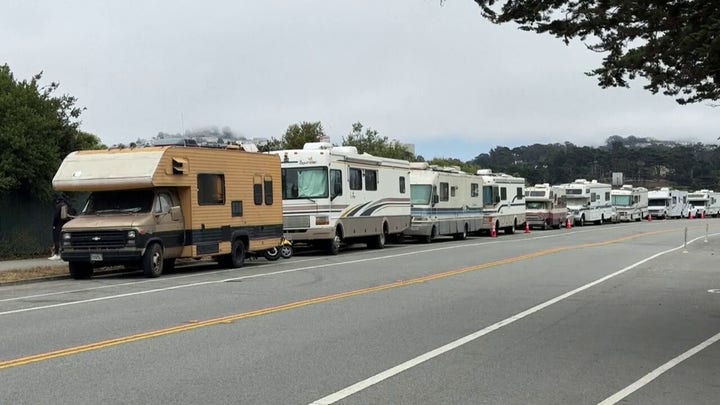When the ambulance arrived in the Kensington neighborhood of Philadelphia two years ago, an angry EMT got out and barked at the crowd, ‘Who called this in?’
Standing next to my cameraman and above the prone body of a shirtless soul bedecked in boils and not moving, I said, ‘I did.’ He didn’t say a word, he looked at me, then down the street at the dozens of strung out bodies, then back at me as if to say, ‘Look at all this, what do you want me to do?’
I had no answer.
Last week, President Donald Trump did answer that question with a much-welcome executive order (EO) intended to bring back civil commitment, in other words, the ability to put people who are a danger to themselves or others in institutions, even against their will.
Civil libertarians are in a tizzy over the EO. They insist this is an abuse of due process and harkens to the bad old days, when hundreds of thousands of Americans were committed to mental institutions, sometimes for dubious reasons.
But in examining and judging Trump’s proposed policy here, it is important to understand and accept what the status quo on the ground is right now, and it is nothing short of horrific.
I’ve traveled to homeless encampments all over America, from tucked-away Manhattan underpasses to the sprawling chaos of San Francisco’s Tenderloin, a place you literally smell a block before you enter.
In these encampments, your gag reflex is challenged by needles sticking out of necks and mountains of human detritus, but the real soul-crushing, existential sadness comes from knowing that these human beings are just being left to die.
For decades now, Democrats have spent endless dollars on fruitless efforts to fix the homeless problem. In California alone, Gov. Gavin Newsom has spent $20 billion on failing to fix it, and only recently admitted the encampments have to go.
In these encampments, your gag reflex is challenged by needles sticking out of necks and mountains of human detritus, but the real soul-crushing, existential sadness comes from knowing that these human beings are just being left to die.
What the Trump administration realizes is that Democrats refuse to accept is that homelessness is, actually, two very distinct problems. One is financial, the other is a matter of addiction and mental health.
Financial homelessness is fairly easy to address. The evicted mother living in her car can be given temporary housing and job assistance. She really does just need a hand up.
Homelessness related to mental illness and addiction, however, isn’t really a homelessness problem at all, it’s an addiction and mental illness problem, and shockingly, just letting people in tents shoot up in what was once a thriving commercial district doesn’t solve it.
As I have wandered the streets of these hellscapes in city after city, my question hasn’t really been if these people would be better off in an institution, but rather, if they weren’t in a de facto open-air institution already.
What does it matter if these places lack walls and locks? They are cages nonetheless, cruel prisons whether voluntary or not.
As I have wandered the streets of these hellscapes in city after city, my question hasn’t really been if these people would be better off in an institution, but rather, if they weren’t in a de facto open-air institution already.
–>Opponents of civil commitment insist you cannot take away people’s freedom! But freedom to do what? Shoot fentanyl every day until they die on a curbside, pockets rifled by another desperate junkie?
If it was your child on these broken and brutal streets of death, would you want them to be left in freedom to waste away, or would you want them taken somewhere where they could be protected and helped?
Opponents will say that civil commitment can be abused. They will point to the 1950s when homosexuals were sent to institutions, but it’s not 1950. We aren’t going to institutionalize gay people, and we cannot be paralyzed by a bigoted past when trying to save lives today.
Could there be abuses or mistakes made regarding civil commitment? Sure, but people are dying in the streets right now, and we must trust ourselves to actively help them, without stepping over the line.
Annoyed with me, or not, that day in Kensington, the EMT revived the man at my feet, who, it turns out, wasn’t dead, after all. Instead, he was angry, because the Narcan that woke him up also negated the high he had paid for.
There are really only two sides to be on here: the side that says we are going to do everything we can to save that man’s life, even against his will, or the side that condemns him to an open-air prison of his own making.
President Trump has chosen wisely, and if local governments take heed, it is going to save a lot of lives across America.

